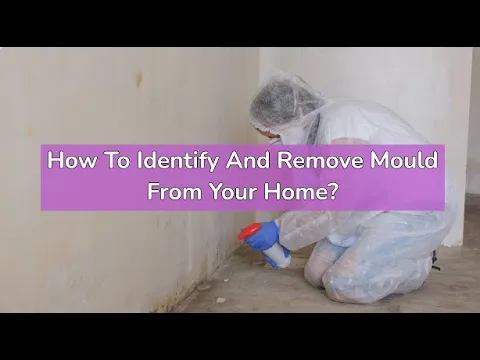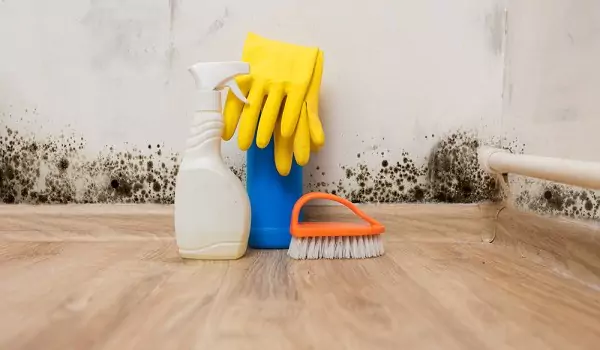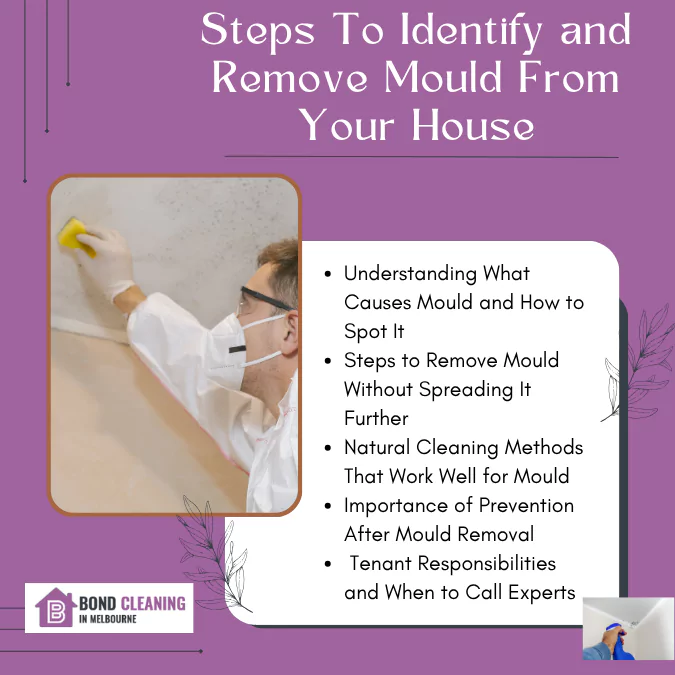
How To Identify And Remove Mould From Your Home?
Mould is more than merely an inconvenience on the walls or ceilings of your house. Mould can grow in these damp spaces, causing damage to surfaces and, more importantly, affecting the quality of indoor air. Mould has become a problem for more households, are of which appear to be increasing due to climate change and changes in weather patterns in many cities. It tends to grow in bathrooms, kitchens, laundries, or areas with moisture buildup over extended periods.
If left untreated, these nasty spores can trigger respiratory problems and allergies. Hence, identifying and removing the problem early can save a lot of trouble. The cleaning process must be safe, systematic, and effective to prevent regrowth. In this blog, we will guide you about the reasons, how to spot mould, steps to remove it and natural cleaning methods for removing mould from your home. It is very important to know how to clean mould from every surface inside and outside of your home. So, read this blog thoroughly.
Hide
Show
1. Understanding What Causes Mould and How to Spot It
Mould begins to grow when moisture builds up in enclosed spaces. Poor ventilation and regular condensation are the most common reasons behind its appearance. Sometimes, leaks in walls or roofs also become a source. In rental properties, it can spread more quickly if cleaning is delayed or neglected.
Spotting mould early is key to maintaining a healthy home. It often smells musty or damp. Visible signs include dark patches near windows, tiles, or even cupboards. Mould can also form inside wardrobes, especially if the airflow is blocked.
Professional thorough end of lease cleaning Melbourne experts often report hidden mould in areas that tenants forget to inspect. These include behind furniture, under floor rugs, or around air conditioning units. Regular inspections and minor upkeep can help prevent major issues later.
2. Steps to Remove Mould Without Spreading It Further

Once mould is visible, immediate removal is important. Safety is the top priority while handling it. Always wear gloves and a face mask to avoid direct contact.
These chores help improve air quality and remove hidden allergens. A thorough bond cleaning checklist always includes these hidden zones, as neglecting them can lead to disputes with tenants during final inspections. Incorporating these tasks as part of post illness cleaning for home hygiene routines also ensures a healthier environment. Doing them weekly avoids big weekend tasks.
In serious cases, professionals offering reliable end of lease cleaning Melbourne solutions may use specialised tools. These can safely remove spores and disinfect the space. In mild cases, cleaning hacks using vinegar or rubbing alcohol that work well. Always test a small patch before applying anything to walls or fabrics.
3. Natural Cleaning Methods That Work Well for Mould
Simple home products can be highly effective in treating light mould on high touch spots. Here’s how each one works and how to use it safely:
- White vinegar: Vinegar is mildly acidic and can kill about 80% of mould species. Spray it directly on the mouldy surface and let it sit for at least an hour before wiping it clean with a damp cloth.
- Baking soda: Mix one tablespoon of baking soda with water to form a paste or solution. Apply it to the moulded area and scrub gently using a sponge or soft brush. It’s safe, non-toxic, and also helps absorb moisture.
- Rubbing alcohol: This is effective for non porous surfaces such as tiles or glass. Dampen a cloth with isopropyl alcohol and wipe the area to disinfect and kill mould spores.
- Lemon juice: The acidity of lemon juice helps break down mould, while its natural scent leaves a fresh smell. Apply directly and gently scrub for a few minutes.
- Tea tree oil: This essential oil is known for its antifungal and antibacterial properties. Mix one teaspoon with a cup of water in a spray bottle. Spray on the affected areas, such as bathroom corners, and let it dry naturally.
- Hydrogen peroxide: Use 3% hydrogen peroxide in a spray bottle. Apply it to mouldy areas, wait 10 minutes, and then scrub clean. It’s especially useful on porous materials and helps eliminate mould deeply.
4. Importance of Prevention After Mould Removal
Cleaning mould is only half the job. Prevention is equally important. Keeping spaces dry and ventilated will reduce the chances of it returning. Exhaust fans in bathrooms and kitchens should be cleaned and used regularly to maintain optimal ventilation.
Open windows frequently and allow sunlight into the home. Dehumidifiers can also help in areas with high moisture levels. Leaks must be repaired immediately. Wiping down damp surfaces after showers or cooking is a simple yet powerful habit.
Property managers often recommend affordable end of lease cleaning services in Melbourne to ensure every corner is properly cleaned. This helps avoid complaints from new tenants during the rental inspection and ensures properties remain in good condition.
5. Tenant Responsibilities and When to Call Experts
Tenants are typically expected to maintain the cleanliness of the rental home. In cases of mould growth caused by poor hygiene or lack of ventilation, they may be held responsible.
However, if mould results from a structural issue or water damage, landlords must fix the root cause. Tenants should report leaks, unusual odours, or stains promptly to avoid larger disputes.
Professional help is essential when:
- Mould covers an area larger than one square metre
- It keeps returning after cleaning
- It has reached the air vents or internal walls
- Family members show signs of breathing issues or rashes
Booking expert end of lease cleaning Melbourne services before moving out helps in passing final inspections. It also ensures the property remains in acceptable condition for the next tenant.
Steps To Identify and Remove Mould From Your House

Wrapping Up
Mould can spread quietly and create serious health issues if left unaddressed. For every household, identifying the early signs and removing them properly is very important. Preventive actions, such as proper ventilation and cleaning routines, are equally necessary. If you are unable to clear after doing the natural and chemical cleaning, seeking professional help is always a wise choice. Taking the correct step at the right time can ensure a safe and clean indoor environment.

